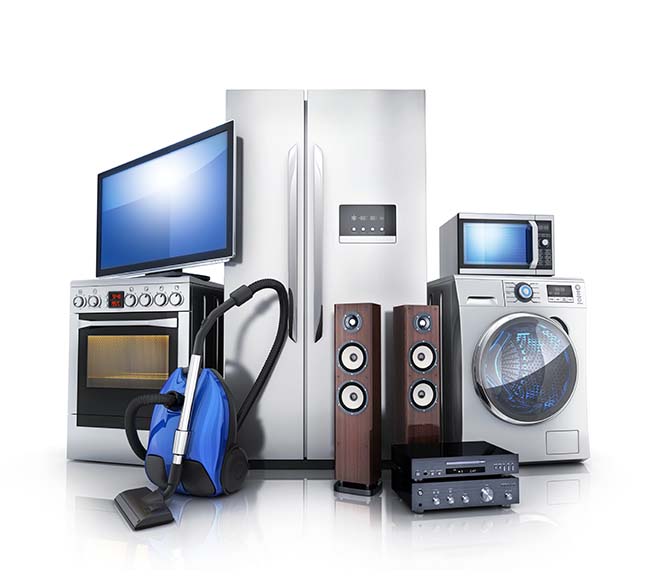Flying Probe PCB Testing: A Practical Guide to Reliable Results
There’s no perfect playbook to establishing and maintaining major transportation projects like...
Electronics makers must stay on top of what’s going into their products and
whether those materials can be sold in their target markets. The global nature of
electronics supply chains only adds to the complexity – what’s OK in one nation
may be illegal in the next.

With global supply chains adding complexity, it's crucial to understand the compliance standards affecting your products. Below we aim to clarify these regulations, addressing key questions about applicable standards, mandatory versus recommended practices, and the importance of compliance. We also highlight the role of your electronics contract manufacturer (ECM) in ensuring your products meet these requirements, ultimately securing your company's supply chain and success.
We explore:
Can’t read all of this at once? Download the guide to read later:

Safety in electronic devices is a critical concern, especially when used in hazardous environments like mines, chemical plants, or oil refineries. Intrinsic Safety (IS) is essential for ensuring that electronics operate without risk of igniting dangerous atmospheres. By limiting electrical and thermal energy, IS technology prevents internal sparks, overheating, and short-circuiting, protecting workers and maintaining safe conditions.
Safety is a top priority for electronics used in hazardous environments like mines and oil refineries. IS electronics prevent ignition risks by limiting electrical or thermal energy and protecting workers from dangers such as internal sparks, overheating, and short-circuiting. By simplifying circuitry, controlling temperatures, and reducing dust-related issues, IS technology ensures safe operation in even the most dangerous conditions.
Many electronics can be found in intrinsically safe forms, including:
Why is intrinsically safe equipment important in these products? Simply put, lives depend on it. For example, reliable communication in a mine is crucial for worker safety, as failures could lead to accidents. Electronics used in environments with flammable gases like hydrogen and propane must avoid sparking or overheating to prevent potential explosions.
Beyond safety, meeting intrinsically safe requirements offers additional benefits: avoiding the cost and bulk of explosion-proof enclosures, allowing maintenance without production shutdowns, and potentially lowering insurance premiums due to reduced risk.
Intrinsic safety reduces current, voltage, and power to levels too low to cause ignition, typically under 1.3W. It also requires controlling the maximum temperature, with electronics meeting the T4 designation considered safe, as they don’t exceed 135°C (275°F).
RoHS (Restriction of Hazardous Substances) is an EU directive to reduce the use of hazardous substances in electrical and electronic equipment (EEE). It's designed to protect human health and the environment.
Essential in electronic manufacturing, RoHS 3 ensures environmental protection by restricting hazardous substances, mandates compliance for market access, and reflects a company's commitment to sustainability. It also drives innovation in safer materials, improves supply chain management, and builds customer trust through adherence to global environmental standards.

RoHS 3, introduced on March 31, 2015, adds four new restricted substances to the list, bringing the total to ten. Compliance has been mandatory for all electronic and electrical equipment sold in the EU since 2019, except for medical devices and monitoring tools which had until 2021 to comply. The restricted substances and their limits are:

RoHS compliance allows for specific exemptions due to the difficulty of manufacturing certain products without restricted substances. Exemptions include military equipment, batteries, implantable medical devices, large-scale industrial tools, and solar panels. These exemptions are time-limited until safer alternatives are found. “RoHS 5” refers to companies compliant with five of the original six restricted substances, allowing exempted products to still be labeled "RoHS compliant."
RoHS changes impact several electronics, particularly those using harmful flame retardants or substances linked to widely used PVC. The medical industry however receives an extension for compliance to ensure patient safety and necessary treatment isn’t delayed.

RoHS 3 requires manufacturers to ensure compliance, prepare documentation, and label products with CE markings. OEMs must adapt or work with ECMs to redesign non-compliant products, using tools like SiliconExpert for component safety. Although the U.S. lacks a federal equivalent, global markets demand similar regulations. Key points include:

REACH, an EU regulation since 2007, aims to protect health and the environment from harmful chemicals. It covers all chemical substances, including those in everyday products. Companies must assess and manage risks, proving to the European Chemicals Agency (ECHA) that their substances are safe. Hazardous chemicals can be banned or restricted, with safer alternatives encouraged. REACH obligations also extend to EU importers, non-EU manufacturers, and downstream users, who must ensure compliance if they handle chemicals during production.
Companies must identify and manage the risks linked to the substances they manufacture and market in the EU to comply with REACH. They must demonstrate to ECHA (European Chemicals Agency) how they’ve ensured the substance can be safely used and not harm the end customer. Authorities can ban hazardous substances if they deem the risks unmanageable. They can also restrict use or make it subject to authorized use only. In the long run, manufacturers should always substitute dangerous chemicals with safer ones when possible.

UL (Underwriters Laboratories) standards are guidelines developed to ensure the safety, performance, and reliability of various products and systems. These standards cover a wide range of industries, from electronics and appliances to building materials and medical devices. Products tested and certified according to UL standards undergo rigorous evaluations to ensure they meet safety requirements and can withstand normal use without posing risks to consumers. UL certification assures manufacturers, regulators, and end-users that the products meet strict safety criteria and are in compliance with relevant regulations.
UL standards assess various aspects, including:
These standards are essential for ensuring consumer and industry confidence in product safety and compliance.

ISO (International Organization for Standardization) certification ensures consistency and quality across nations and industries. It is a symbol of trust, certifying that a company maintains high standards in services, manufacturing processes, documentation, and management systems. ISO-certified vendors undergo annual audits to maintain certification, which is crucial for proving their ability to meet industry needs, especially in sectors like medical electronics.
While not mandatory, OEMs want validation of a contractor’s manufacturing processes as a way to help validate their own final products. A PCB manufacturer’s records must meet strict medical requirements. This rigorous process ensures that companies have the proper systems in place to deliver reliable products.

There are many documents in the standards ISO 9000 family of standards, but ISO 9001 is the only one in the 9000 series that requires certification. The current version is ISO 9001:2015.
ISO 9001 emphasizes continuous improvement and customer satisfaction.
Note: This is NOT a standard for product quality. It’s a way to control processes, which in turn helps you get a great end product.


You may be asking, if the issue is quality, isn’t ISO 9001 enough? Not in the medical world. If you’re a medical equipment maker, ISO 13485 certification is most important to you.
When your company reaches out to potential new ECMs, the phrase ISO 13485 is likely uttered by one of the parties within the first few sentences. This 9001 offshoot 13485 focuses on customer requirements and risk management.
If a contractor has ISO 13485 certification, it also has ISO 9001 certification. ISO 13485 adds another, critical layer to the ISO 9001 foundation.
ISO 13485 is a quality management standard focused on medical devices, emphasizing risk management and safety. It ensures that manufacturers have safeguards like record-keeping, device history records, regulatory documentation, product verification, supply chain evaluation, and annual audits. This standard is crucial for medical device safety, often aligning with the FDA's Current Good Manufacturing Practices (CGMP).
Key points include:
ISO 13485 certification signifies that a manufacturer adheres to FDA standards, providing an additional layer of assurance. Some contract manufacturers secure both ISO 13485 and ISO 9001 to strengthen their quality management infrastructure.

While ISO 9001 and 13485 focus on customer satisfaction and product quality, ISO 14001 centers around environmental impact, 14001’s prime directive is to help companies maintain an environmental management system (EMS), which details
the processes and plans around how the company interacts with the environment.
ISO 14001 guides companies on how to lower liability costs, conserve materials and labor, and improve leadership.
To become ISO 14001 certified, companies must either base their EMS off of 14001 standards or certify employees to be able to audit to ISO 14001 standards. The ISO 14001 certification doesn’t happen overnight – it’s an intense process, but the benefits are worth the effort.

Matric and Dynamic Manufacturing have both ISO 13485 and ISO 9001 certifications, so let us know if you have any questions about either certification.
Medical device companies looking for a PCB design and assembly partner have many important factors to consider, all with the end user’s well-being at risk. Finding an
experienced, ISO 13485 certified manufacturer is one of the most important. Medical device OEMs especially need to know they’re dealing with someone proven to meet specific standards.
Working with an electronics contractor with ISO 13485 certification can help OEMs meet the standards of the FDA’s Quality System Regulation and CGMP. But there's more to it than that.
While you aren’t necessarily breaking the law when you don’t follow IPC standards, you are preventing your product from being recognized as safe and high-quality. For a safe and high-quality product, your contract electronic manufacturer must follow these guidelines.
The IPC standards chart provides guidelines for the production and assembly requirements of electronics manufacturing. Each "code" represents a specific standard or document outlining these guidelines. Founded in 1957 as the Institute for Printed Circuits, IPC — now known as IPC — Association Connecting Electronics Industries—sets the most widely used standards for acceptability in the electronics industry, accredited by the American National Standards Institute.
Matric Group regularly uses the following IPC standards:


OEMs and contract electronic manufacturers in the U.S. use location-specific IPC standards to test trainers, with over 3,600 trainers currently using the IPC standards chart. These standards ensure consistent ROI from development efforts, especially for OEM parts held to high consumer standards. IPC standards leave no room for product safety or utility interpretation, so it's crucial to work only with vendors who adhere to these rules.
This standards tree shows the documentation and specifications needed for manufacturing aspects such as:
● Design
● Solderability
● Materials
● Inspection
● Performance
● Assembly
● Cleaning
● Much more
Keep up on recent revisions by checking out this IPC standards revision list, or download ours below.


In electronics manufacturing, PCBs are classified into three categories: Class 1, 2, and 3, based on quality levels, as defined by the IPC-6011 standard.
The classification impacts inspection rigor and quality standards, helping OEMs determine the appropriate class based on customer needs and cost considerations. Remember, the categories reflect the level of quality of each board type, so in some cases, it's crucial to make sure your manufacturer is qualified to work with you.
Nadcap accreditation, AS9100 certification, and MIL-STD standards are critical benchmarks for quality and compliance in the aerospace and defense industries. These certifications ensure that companies adhere to rigorous industry standards, opening doors to partnerships with leading OEMs and ensuring the reliability of military-grade electronic components.

Once known as the National Aerospace and Defense Contractors Accreditation Program, this standards certification is now referred to as Nadcap. Overseen by the Performance Review Institute (PRI), its purpose is to establish accreditation requirements, issue accreditation credentials, and define operational program requirements for manufacturers. Nadcap is one of the most dependable standards for manufacturing – it covers everything from welding and part machining to electronics manufacturing.
For an ECM to receive Nadcap accreditation, it must undergo a rigorous technical assessment of its PCB manufacturing process, conducted by industry experts. Nadcap compliance represents that a company is capable of meeting customer requirements and performing to industry standards.

Nadcap isn’t the only standard for aerospace and defense — one of the most common QMS standards is ISO 9100:2015 — AS9100. The AS9100 Rev D is an audit and standardized quality management system for aerospace manufacturers and suppliers. It was released by the International Aerospace Quality Group (IAQG). These guidelines for implementing Quality Management Systems have been specifically designed for space, aviation, and defense organizations.
The terms "ISO 9100" and "AS9100" are often used interchangeably. However, they're not the same. The AS9100 builds on the quality management system requirements for ISO 9100 and is not maintained by ISO. The IAQG adopted the ISO 9001:2015 requirements and added provisions specific to aerospace Quality Management System requirements.
AS9100 Rev D is a set of guidelines that govern how companies implement aerospace quality management systems. Such requirements aim to ensure that products and services meet the standards necessary to meet customers' needs.
Comparatively, Nadcap accreditation demonstrates that suppliers meet all the requirements for specific aerospace industry special processes. Whereas AS9100 applies to all companies in the aerospace sector, Nadcap is limited to companies that perform specific processes.

MIL-STD is the official designation used to achieve standardization objections set by the Department of Defense. These standards cover the end characteristics of the product, as well as the processes, materials, and security standards to be followed in their production.
The five types of defense standards include:
These defense standards are meant to ensure proper performance and logistical usefulness of military equipment. Although their origins can be traced back for decades, the pressing need for standardization became most apparent during WWII.
As electronics and PCB capabilities rapidly emerged and evolved, the standards had to quickly update to keep up. In 2011, the Defense Department instituted the Supply Chain Hardware Integrity for Electronics Defense (SHIELD) program which calls for improved measures to safeguard against tampering or component removal.
Conflict minerals like tin, tungsten, tantalum, and gold are essential but problematic for the electronics industry due to sourcing regulations under the Dodd-Frank Act. Carbon nanomaterials may offer an alternative to these rare metals. Contract manufacturers should use tools like SiliconExpert to track conflict mineral usage and ensure compliance. For defense-related products, ITAR compliance is crucial to protect intellectual property and national security.
ITAR compliance focuses on protecting military equipment and sensitive information, including communication devices, aerospace products, and more. OEMs and ECMs involved in producing these components must adhere to ITAR regulations, which are enforced by the U.S. State Department and carry heavy fines for violations.
Compliance involves strict security measures, such as limiting access to facilities, restricting mobile device use, and safeguarding intellectual property. ITAR is crucial for securing government contracts in defense and aerospace, and adhering to it helps prevent IP theft and other security breaches.

The Mine Safety and Health Administration (MSHA) enforces regulations to protect workers in the mining industry, covering more than just electronics.
MSHA enforces the Federal Mine Safety and Health Act of 1977, amended by the MINER Act in 2006. Standards for mining electronics focus on preventing explosions, with two key approval methods: explosion-proof, which contains damage within the product, and intrinsically safe, which limits energy to prevent ignition.
The electronics manufacturing supply chain poses significant risks to OEMs, with compliance with environmental and international regulations being a major challenge. To minimize costs and lead times, OEMs and their contractors must ensure components comply with evolving regulations. Failure to do so can result in severe penalties. Key regulatory areas impacting the supply chain include:
OEMs should collaborate with expert contract manufacturers to navigate these regulations effectively. Take all of this information, and more, with you with our free resource below!

There’s no perfect playbook to establishing and maintaining major transportation projects like...